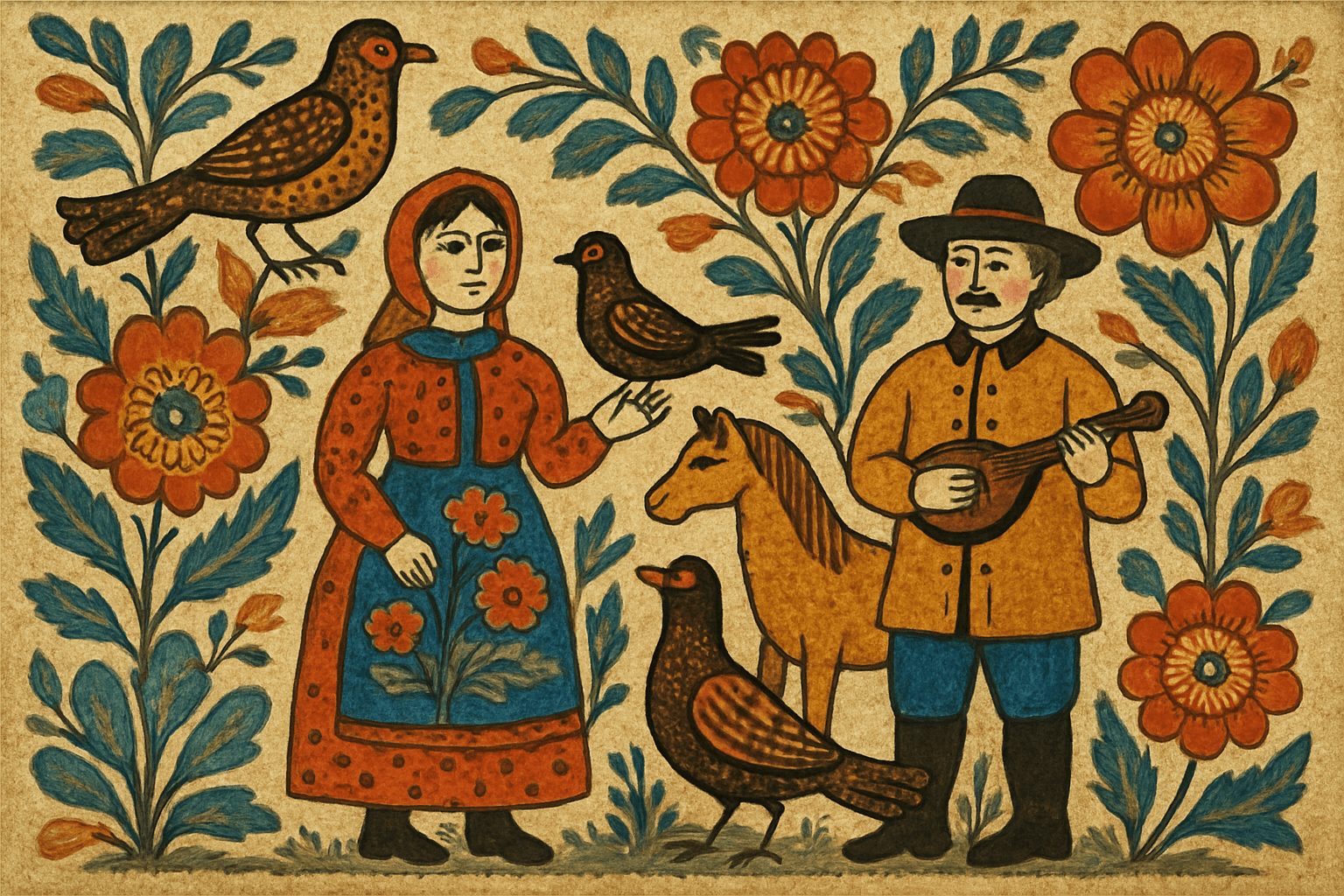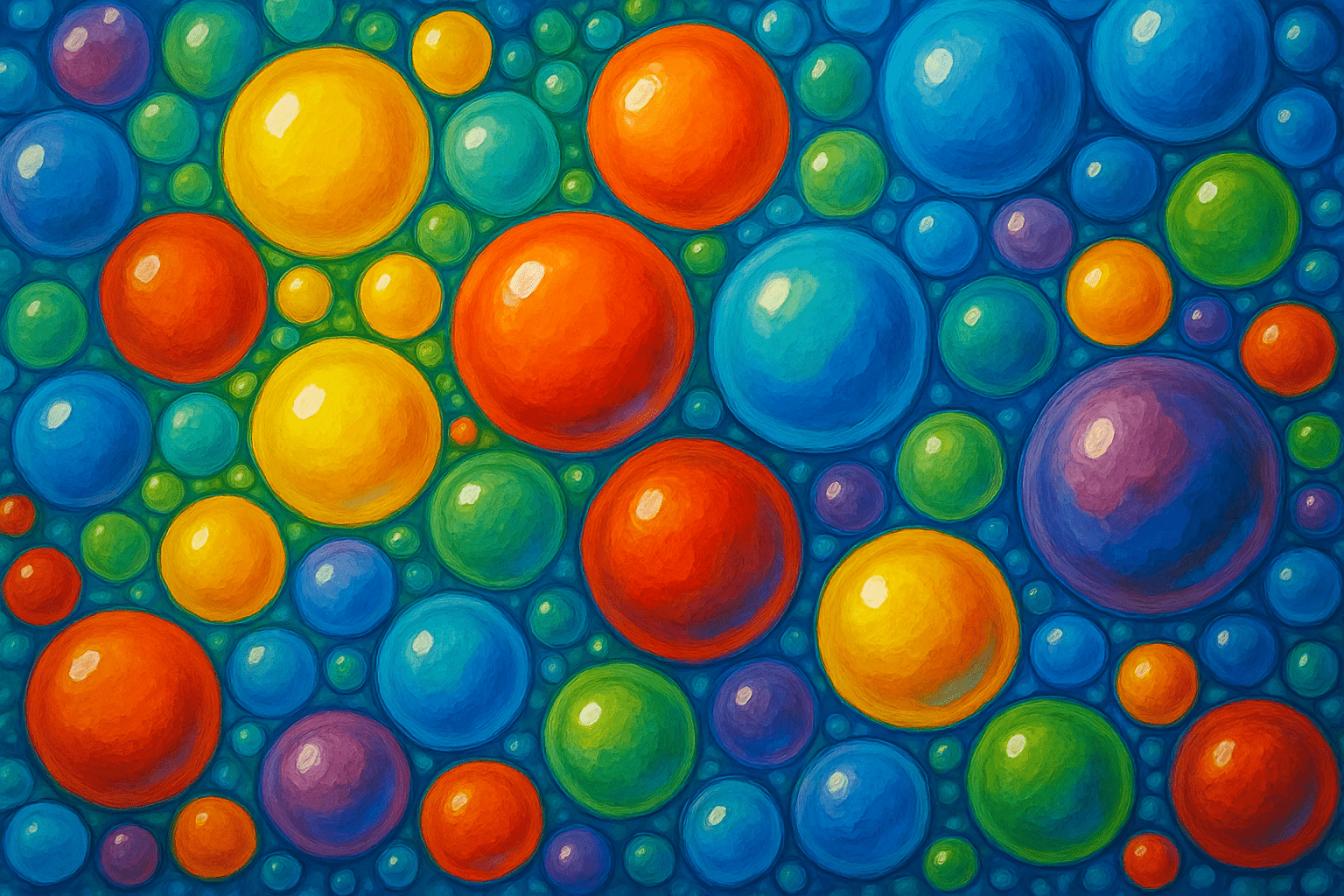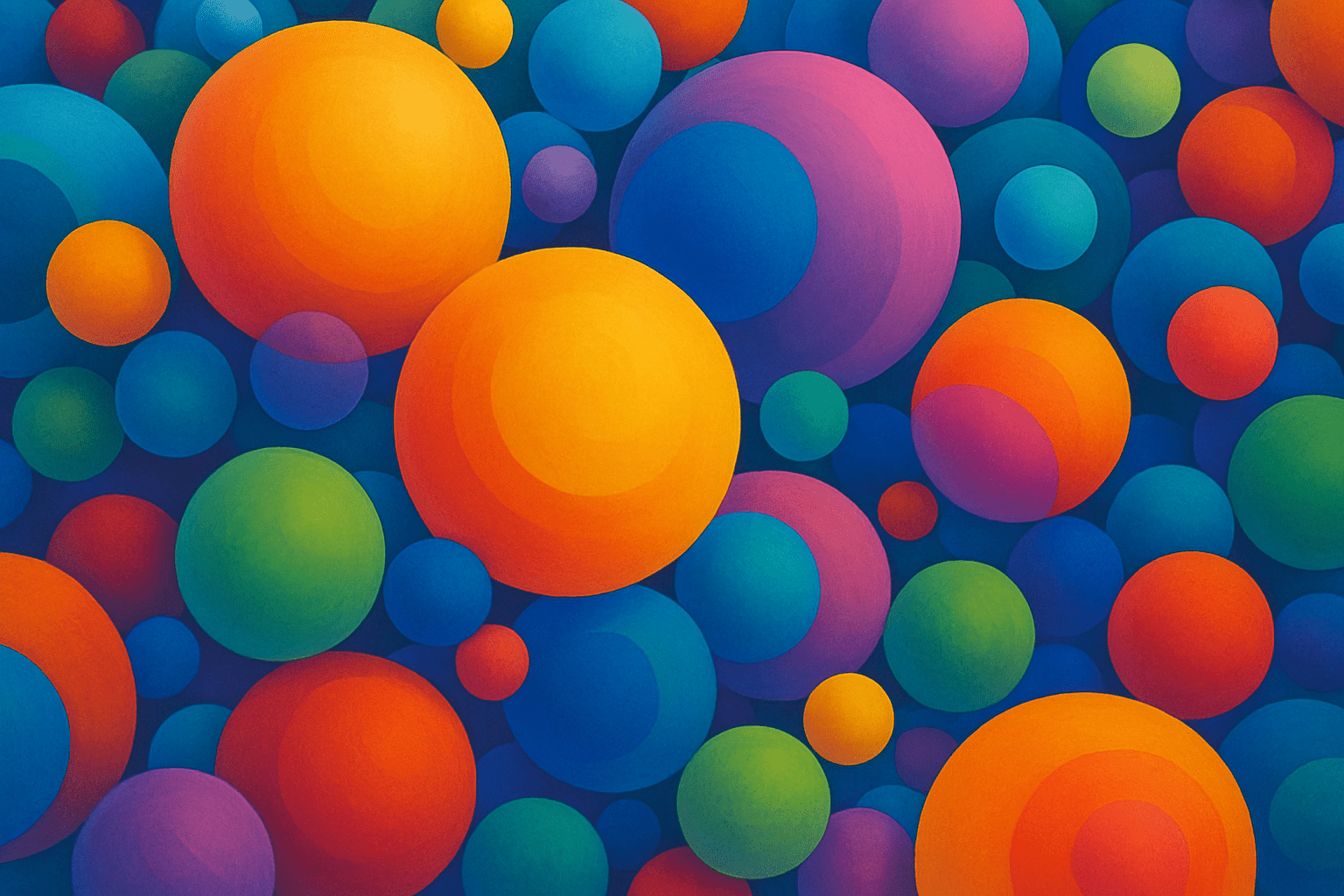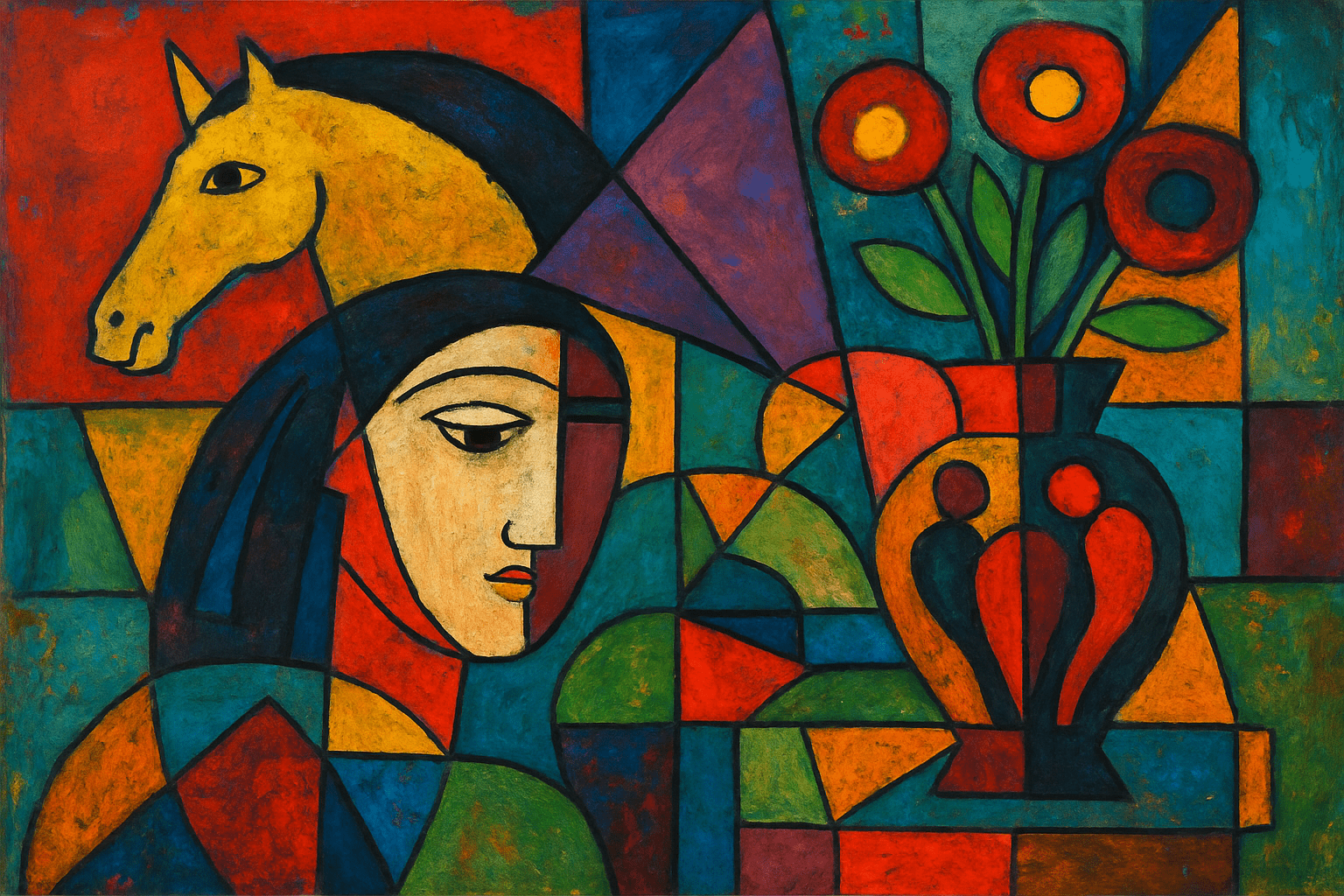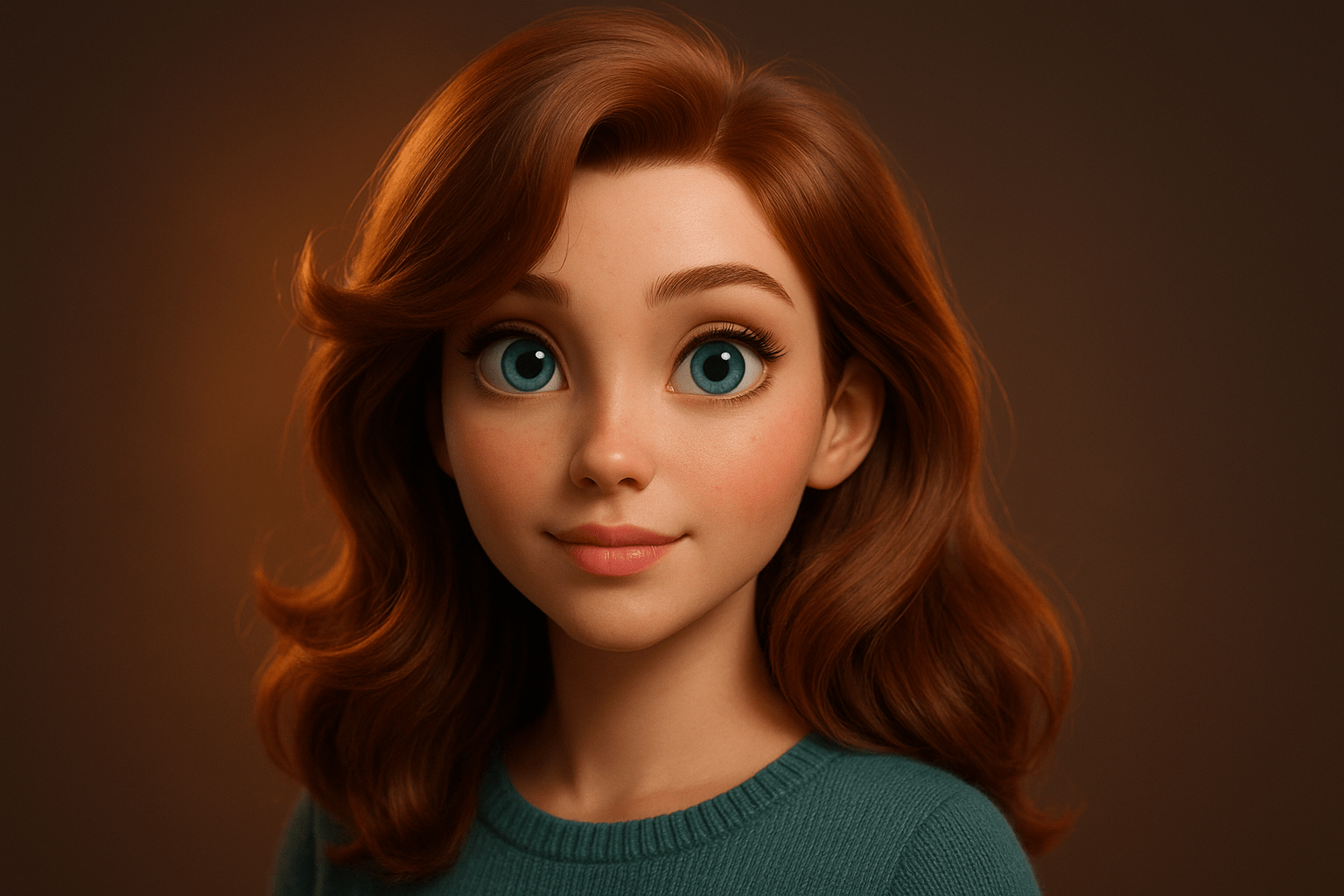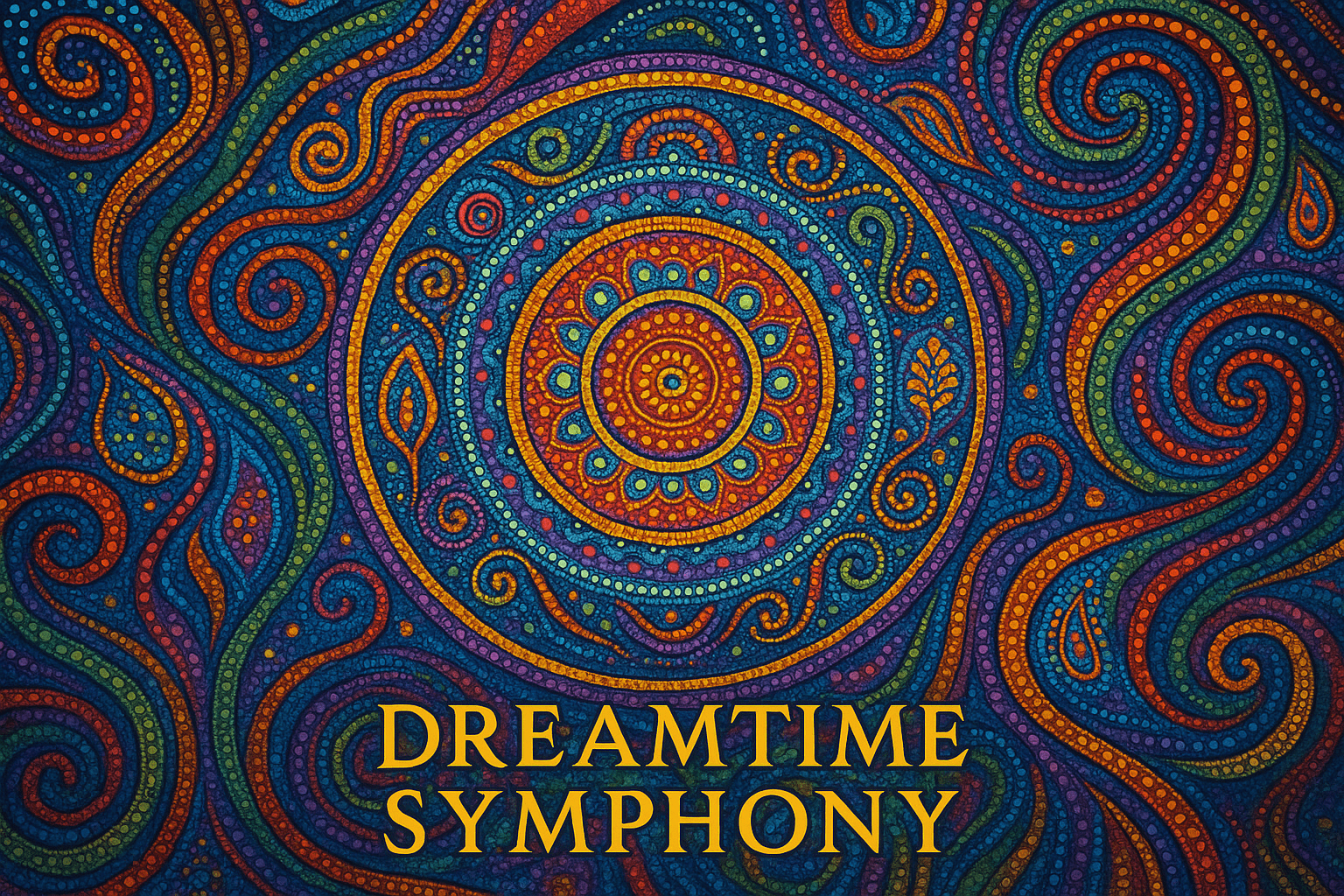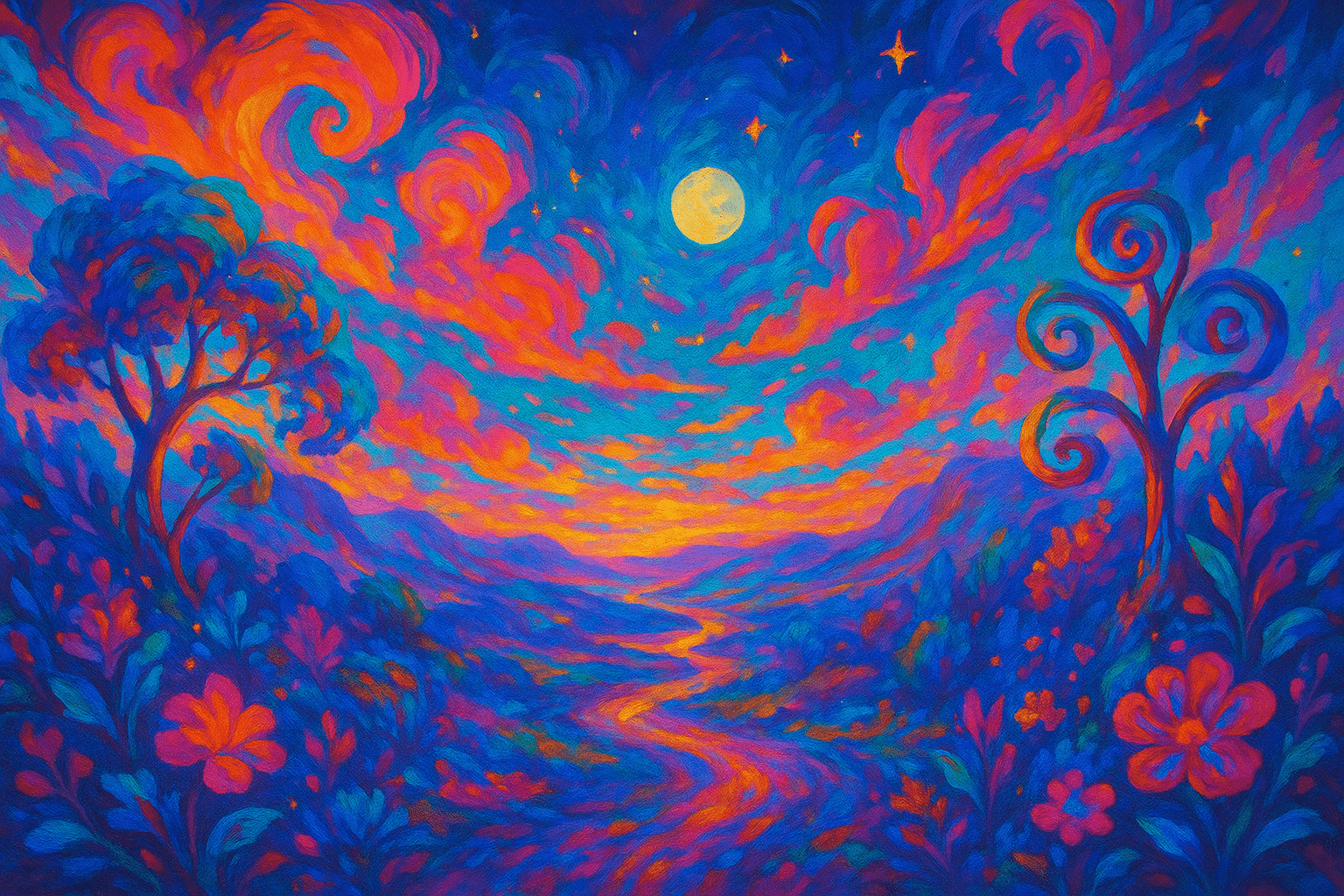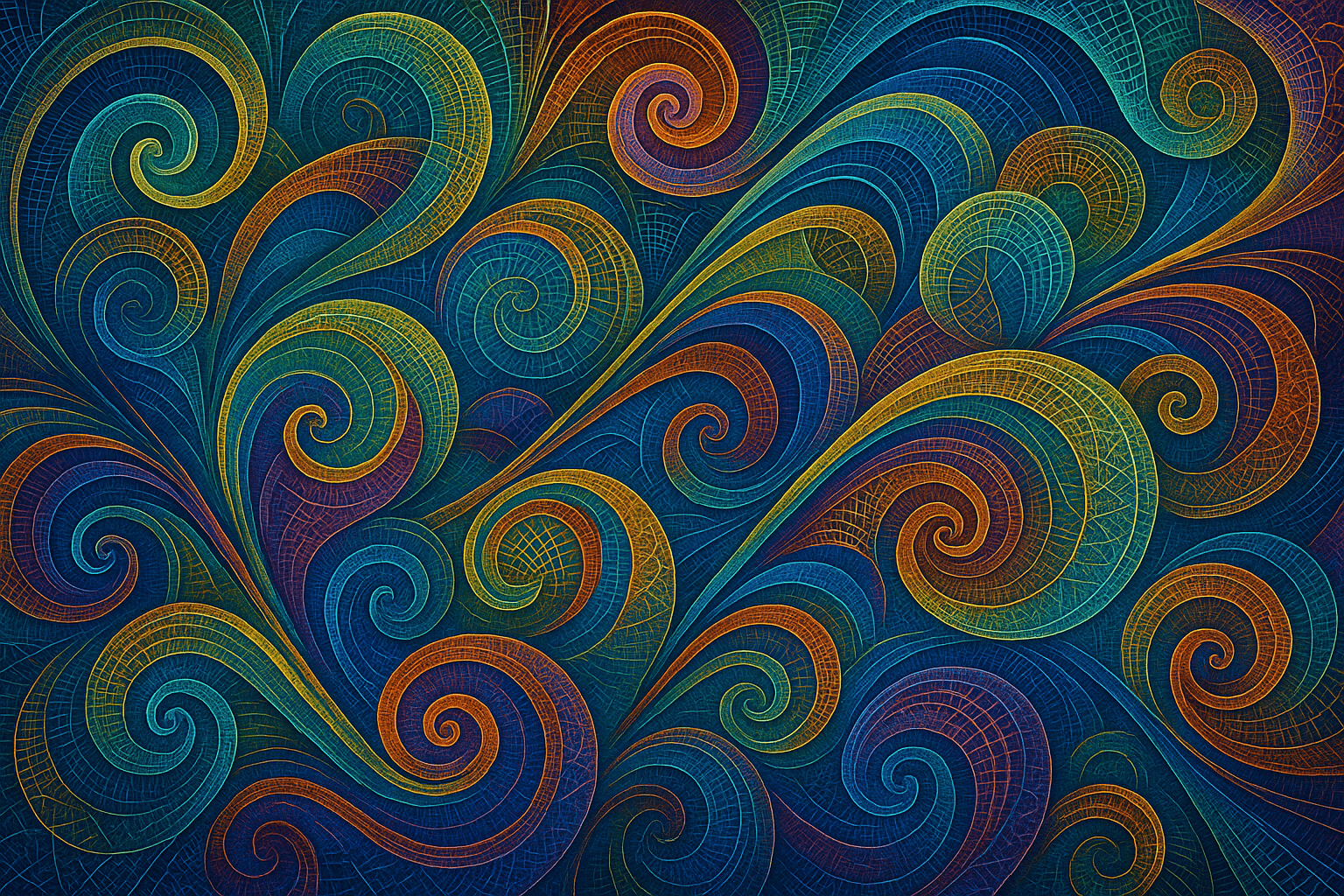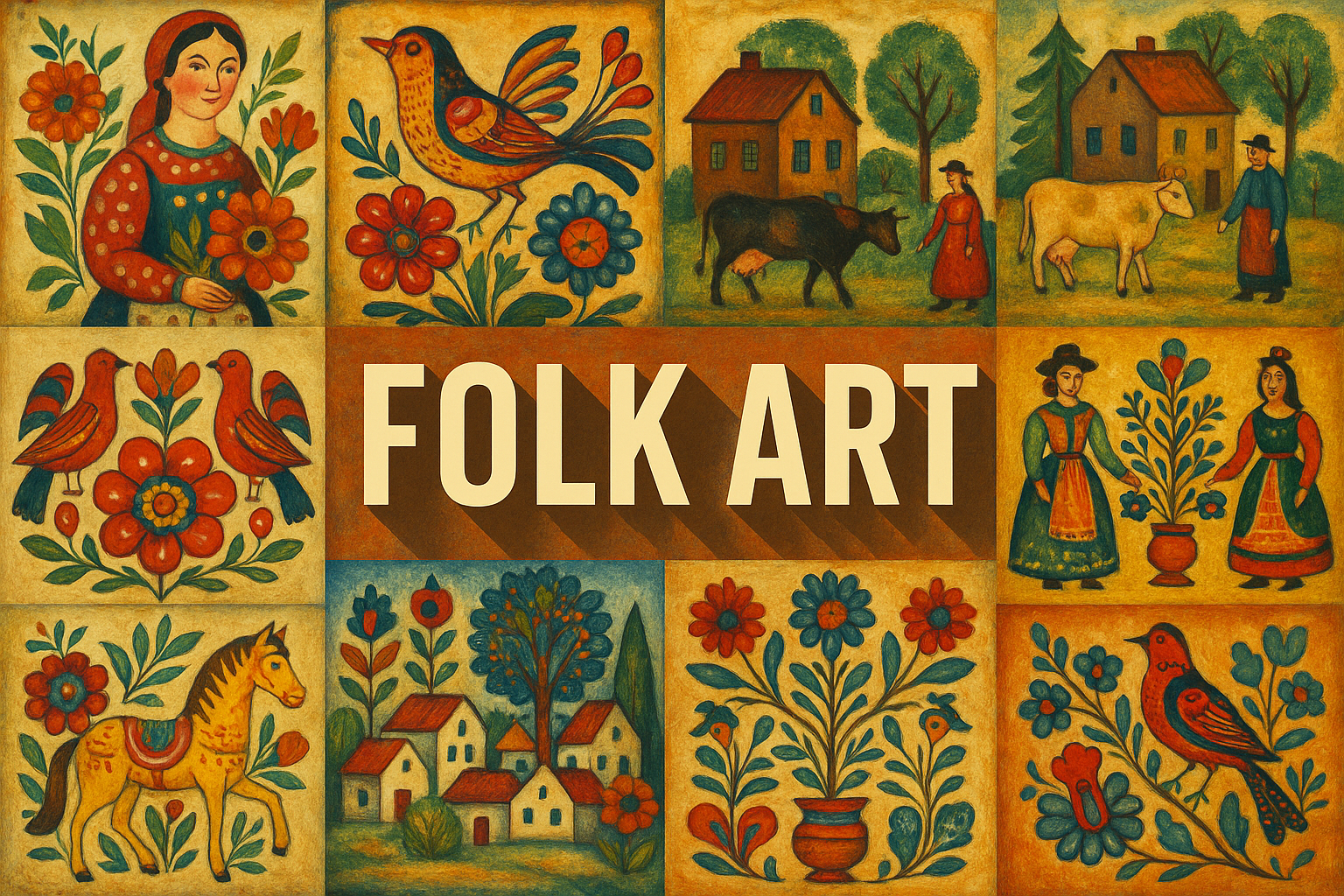
Folk Art
Folk art is usually brightly colored and has a simple, childlike quality to it. It is often made from recycled materials such as bottle caps, scraps of fabric, or pieces of wood.
AOI thinking about Folk Art [+_~]-/
Overview and Quickfacts
Folk art is a type of art that is usually created by people who have no formal training in art. It is often based on traditional art forms that are unique to a particular culture. Folk art can be found in many different parts of the world and is often used to decorate homes and public spaces.
Can understand it also, as:
Handicraft, artisanal work, craft
Categorize it as:
Impressionism, Modernism
.: Dreaming :.
holds a HAIKU for the art style
:. Thought is power .:
Detailed Description
Folk art is a type of art that is usually created by people who have little or no formal training in art. It is often based on traditional art forms that are passed down from generation to generation. Folk art can be found all over the world, and it often reflects the culture of the region where it was created. Famous folk artists include Grandma Moses, who was an American folk artist who began painting in her 70s, and folk artist Edward Hicks, who is best known for his paintings of peaceable kingdoms. Folk art is often characterized by its use of bright colors, simple shapes, and folk motifs. It is often created using whatever materials are available, such as wood, fabric, paper, or metal. If you are interested in learning more about folk art, there are many books and websites that can provide you with more information. You can also find folk art for sale at many art galleries and online retailers.
.. beep, beep, beep ..
<START OF TRANSMISSION>
1. Folk art is art that is developed by a community of people, usually with shared traditions and values. 2. Folk art is often passed down from generation to generation. 3. Folk art can be found in many different cultures around the world. 4. Folk art often has a unique style that is different from the art of the mainstream art world. 5. Folk art is often made with traditional materials and techniques. 6. Folk art often has a functional purpose, such as being used in everyday life or for ceremonial purposes. 7. Folk art can be made by anyone, regardless of their formal training or artistic skills. 8. Folk art is often seen as a reflection of the culture and values of the community in which it was created. 9. Folk art can be used to tell stories, express emotions, or communicate messages. 10. Folk art can be created for personal or public display. 11. Folk art can be found in a wide variety of settings, including homes, public spaces, and museums. 12. Folk art can be created in many different mediums, including painting, sculpture, textiles, and pottery. 13. Folk art often has a decorative or ornamental purpose. 14. Folk art can be created for sale or trade, or simply for personal enjoyment. 15. Folk art can be commissioned by individuals or organizations. 16. Folk art can be created as part of a group or individually. 17. Folk art can be created for a specific audience or for a general audience. 18. Folk art can be created for a variety of reasons, including to express religious beliefs, to commemorate important events, or to simply decorate a space. 19. Folk art can be a valuable source of information about a culture or community. 20. Folk art can be enjoyed by people of all ages.
<EOF>
.. robbel bob
Visual Examples from our image gallery
Coming soon, we are so slow .. might never come
Artists, Paintings, and more
(be aware, can be highly speculative)
Artists (be aware, speculation possible):
1. William Matthew Prior – 1806-1873 2. Edward Hicks – 1780-1849 3. John Quidor – 1807-1881 4. George Caleb Bingham – 1811-1879 5. Rufus Porter – 1792-1884 6. Ammi Phillips – 1788-1865 7. John James Audubon – 1785-1851 8. Grandma Moses – 1860-1961 9. Horace Pippin – 1888-1946 10. N.C. Wyeth – 1882-1945 11. Andrew Wyeth – 1917-2009 12. James Hampton – 1909-1964 13. Horace Pippin – 1888-1946 14. Clementine Hunter – 1886-1988 15. Anna Mary Robertson “Grandma” Moses – 1860-1961 16. Minnie Evans – 1886-1987 17. Bill Traylor – 1856-1949 18. Mary T. Smith – 1890-1977 19. Ellis Ruley – 1882-1959 20. Aaron Douglas – 1898-1979 21. Jacob Lawrence – 1917-2000 22. Augusta Savage – 1892-1962 23. John Henry – 1811-1874 24. Harriet Powers – 1837-1910 25. Clementine Hunter – 1886-1988 26. Lonnie Holley – 1949- 27. Bessie Harvey – 1891-1984 28. James “Son” Thomas – 1907-1993 29. Thornton Dial – 1928-2016 30. Joe Minter – 1943-
Artworks (be aware, speculation possible)
1. American Gothic, Grant Wood, 1930 2. The Hay Wagon, Andrew Wyeth, 1945 3. Christina’s World, Andrew Wyeth, 1948 4. The Midnight Ride of Paul Revere, Grant Wood, 1931 5. Daughters of the American Revolution, Grant Wood, 1932 6. The Farmhouse, Andrew Wyeth, 1948 7. The Cornfield, Andrew Wyeth, 1948 8. The Road to Emmaus, Andrew Wyeth, 1945 9. The Runaway, Andrew Wyeth, 1949 10. Wind from the Sea, Andrew Wyeth, 1947 11. The Swimming Hole, Andrew Wyeth, 1945 12. The Country Doctor, Andrew Wyeth, 1948 13. The Helga Pictures, Andrew Wyeth, 1986 14. The Wyeths of Chadds Ford, Andrew Wyeth, 1945 15. The Big Room, Andrew Wyeth, 1946 16. The Barn, Andrew Wyeth, 1948 17. The Door, Andrew Wyeth, 1945 18. The Mill, Andrew Wyeth, 1948 19. The Nighthawks, Edward Hopper, 1942 20. The House by the Railroad, Edward Hopper, 1925 21. Room in New York, Edward Hopper, 1932 22. Early Sunday Morning, Edward Hopper, 1930 23. Chop Suey, Edward Hopper, 1929 24. Nighthawks, 1942, Edward Hopper 25. Automat, 1927, Edward Hopper 26. New York Movie, 1939, Edward Hopper 27. Cape Cod Evening, 1939, Edward Hopper 28. Soir Bleu, 1914, Edward Hopper 29. A Woman in the Sun, 1961, Edward Hopper 30. Girl at a Window, 1955, Edward Hopper
Epoch
The art style Folk Art emerged in the 18th century.
AI ART RESSOURCES (AKA, well Tools)
Helping tools -> predefined search links on other pages:
